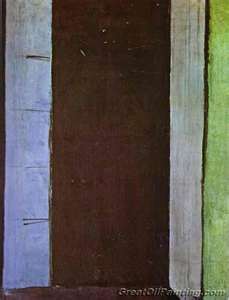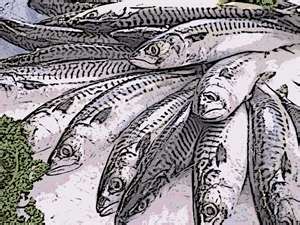
Hot off the press: The Monkey & the Wrench: Essay into Contemporary Poetics, edited by Mary Biddinger and John Gallaher. As its back cover material correctly states,
“The Monkey & the Wrench: Essays into Contemporary Poetics takes a snapshot of a moving target: the ever-shifting conversation about today’s poetry. The ten essays in this collection offer reflections and insights, practical advice for craft matters, and provocative points of departure for those who read and write poetry.”
The ten essays include work by some terrific poets and critics, including Bob Archambeau, Elisa Gabbert, Michael Dumanis, Stephen Burt, Benjamin Paloff, Elizabeth Robinson, David Kirby, Cole Swensen, and Joy Katz. (For a good sense of what’s in the book, go to editor John Gallaher’s blog post on the book, here.)
I was fortunate to have a short essay published in this book, as well. Last year, with Mark Wallace, I co-organized a panel, called “Hybrid Aesthetics and Its Discontents,” for the annual Association of Writers and Writing Programs conference. Editor John Gallaher attended the panel, and, afterwards, asked if we might like to publish the papers delivered in the panel in The Monkey & the Wrench. We took John up on his offer.
The papers included in “Hybrid Aesthetics and Its Discontents” are Mark Wallace’s “Against Unity,” my own “No Laughing Matter: The Humorless Hybrid,” Arielle Greenberg’s “Hybridity in Gurlesque Poetry,” Craig Santos Perez’s “Whitewashing American Hybrid Aesthetics,” and Megan Volpert’s “A Drag Queen’s Lament: Or, how I learned to stop worrying and love my camp.” Each of these papers, in its own way and to its own degree, critiques the growing phenomenon of hybridity in American poetry, especially as it appears in American Hybrid: A Norton Anthology of New Poetry. In the words of the introduction to our panel papers:
“In ‘Against Unity,’ Mark Wallace challenges the application of what he sees as the overly simple two-camp model to a much more complex contemporary American poetry scene, and, while he continues to call for hybridity in poetry, the hybridity he hopes for is a stranger, even more monstrous kind of hybridity than is found in American Hybrid. In ‘No Laughing Matter: The Humorless Hybrid,’ Michael Theune reveals that hybridity, while meant to synthesize, in fact reinscribes a significant division in American poetry: that between the serious and the comedic. In ‘Hybridity in Gurlesque Poetry,’ Arielle Greenberg considers another kind of hybridity, the Gurlesque, a more extreme and vigorous hybrid than is typically encountered in hybrid anthologies. Both Craig Santos Perez and Megan Volpert reveal the culturally conservative trends in hybrid anthologizing; in ‘Whitewashing American Hybrid Aesthetics,’ Perez critiques American Hybrid for not representing America’s racial and ethnic diversity, and in ‘A Drag Queen’s Lament: Or, how I learned to stop worrying and love my camp,’ Volpert critiques the relatively conservative sexual politics of hybridity and calls for a poetry of unapologetic, queer difference.” (119)
I hope any and all who are curious about, and perhaps a bit skeptical of, hybrid poetry check out “Hybrid Aesthetics and Its Discontents.”
For those interested in matters of the poetic turn, I’ll simply say that my short essay makes a point that I’ve tried to make in different ways in different venues (including here, and here): that hybrid poetry typically does not (and perhaps cannot) deliver truly amazing, witty, fitting and surprising turns. From my essay:
“Humor requires great orchestration, the management of great, playful leaps. What the hybrid, with its recombinations, its disruptions and scramblings (which very often come to seem like, and which hybrid thinking so far has done nothing to differentiate from, mere short circuiting), has real trouble creating is wit. Wit—recognized as one of the rarest of all poetic achievements; in his essay ‘Andrew Marvell,’ T.S. Eliot calls wit ‘something precious and needed…’ (263)—is such a precious achievement because in order to create it one must create a sense of fitting surprise, a state in which language both delivers on expectations yet leaps beyond them. As Barbara Herrnstein Smith notes in Poetic Closure: A Study of How Poems End, ‘A hyperdetermined conclusion will have maximal stability and finality; and when these qualities occur in conjunction with unexpected or in some way unstable material…the result will be wit—which, as many have observed, occurs when expectations are simultaneously surprised and fulfilled’ (206). Wit requires a real synthesis, and humor requires the skillful, effective combination of attentiveness to the brain and the guts and the groin. The hybrid offers no vision of what a successful recombination of poetic elements is; though it talks of synthesis, its poems don’t have to have wit’s synthesis, and rather are allowed to be messy amalgamations. Perhaps exquisite, singular poetic syntheses are omitted from hybrid anthologies because they would put to the test the value of hybridity in general.” (131-32).
Joy Katz’s essay, “Goodbye, Goodbye, Goodbye: Notes on the Ends of Poems,” also contains some interesting insights for those intrigued by turns in poetry. I hope to discuss her essay in another post in the very near future.





